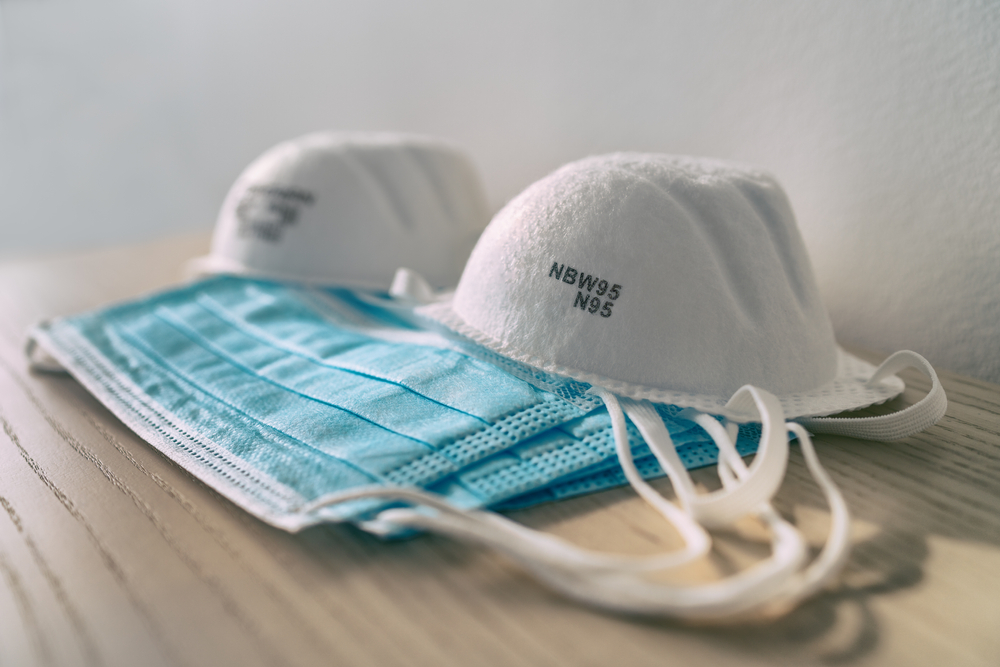While there currently is no limitation on N95 respirator availability, National Institute for Occupational Safety and Health (NIOSH) researchers found humidity helps decontaminate reused filtering facepiece respirators (FFRs).
When supplies of N95 FFRs were low or unavailable in 2020, the Centers for Disease Control and Prevention (CDC) recommended FFR reuse as a crisis strategy. The CDC also recommended that healthcare facilities store N95s or other FFRs for 5 days to reduce the amount of the SARS-CoV-2 virus, which causes COVID-19, on them before reuse.
NIOSH researchers measured the amount of virus that persists on FFRs stored at a constant temperature of 68° Fahrenheit (20° Celsius) under various humidity levels relative to temperature, or relative humidity. Researchers found that the amount of live virus decreased by more than 99% when FFRs were stored under conditions of high humidity. The greater the humidity, the shorter the virus half-life, which decreased from approximately 30 hours at 20% to about 2 hours at 75% humidity. Even at 20% humidity, live virus still decreased by more than 93%.
The NIOSH findings were published in the Journal of Occupational and Environmental Hygiene. Crisis strategies, including FFR reuse, are no longer necessary.
Future of Work Initiative sets research priorities
NIOSH’s Future of Work Initiative published its Research Agenda, the priorities of which include research into alternative work arrangements and the effects of artificial intelligence (AI) and robotics.
Priorities for the Future of Work Initiative cover a breadth of topics involving work, the workplace, and the workforce.
The nine goals outlined in the research agenda are:
- Improve worker safety, health, and well-being outcomes through healthier organizational design policies, practices, and programs, including evaluating health, safety, and well-being effects of employer-sanctioned flexibility versus worker-governed flexibility.
- Determine and address worker issues related to automation, technological job displacement, and occupational “polarization” through the disappearance of “middle-skill” jobs.
- Identify and address the safety, health, and well-being risks for workers in different work arrangements (employee, independent contractor, and volunteer).
- Minimize worker risks, and maximize benefits associated with the application of AI.
- Mitigate worker safety and health challenges, and leverage the opportunities associated with robotics.
- Evaluate the impact of innovative and emerging technologies, such as 3D printing, nanotechnology, and smart materials, on worker well-being.
- Identify, examine, and reduce the inequitable distribution of work-related risks and benefits due to demographic characteristics.
- Reduce adverse worker safety, health, and well-being effects resulting from economic insecurity (inadequate income and benefits or opportunity).
- Assess continued education, training, and skill-building needs and approaches to improve occupational safety and health outcomes.
NIOSH also revealed what information was most viewed in 2021 on the institute’s outreach channels—Facebook, Instagram, Twitter, and Science Blog—and the institute’s most downloaded documents.
The five most downloaded documents in 2021 were:
- “NIOSH List of Antineoplastic and Other Hazardous Drugs in Healthcare Settings, 2016”
- “NIOSH Pocket Guide to Chemical Hazards 3rd Printing”
- “Environmental Control for Tuberculosis: Basic Upper-Room Ultraviolet Germicidal Irradiation Guidelines for Healthcare Settings”
- “Applications Manual for the Revised NIOSH Lifting Equation”
- “Criteria for a Recommended Standard: Occupational Exposure to Heat and Hot Environments”
On September 20, 2021, the White House and OSHA announced steps to address worker exposures to excessive heat and heat-related illnesses—steps that include the development of a federal workplace heat standard. On October 27, OSHA issued an advance notice of proposed rulemaking (ANPRM) for the standard.
NIOSH first issued a criteria document for a recommended standard in 1972, revising it in 1986 and again in 2016.

